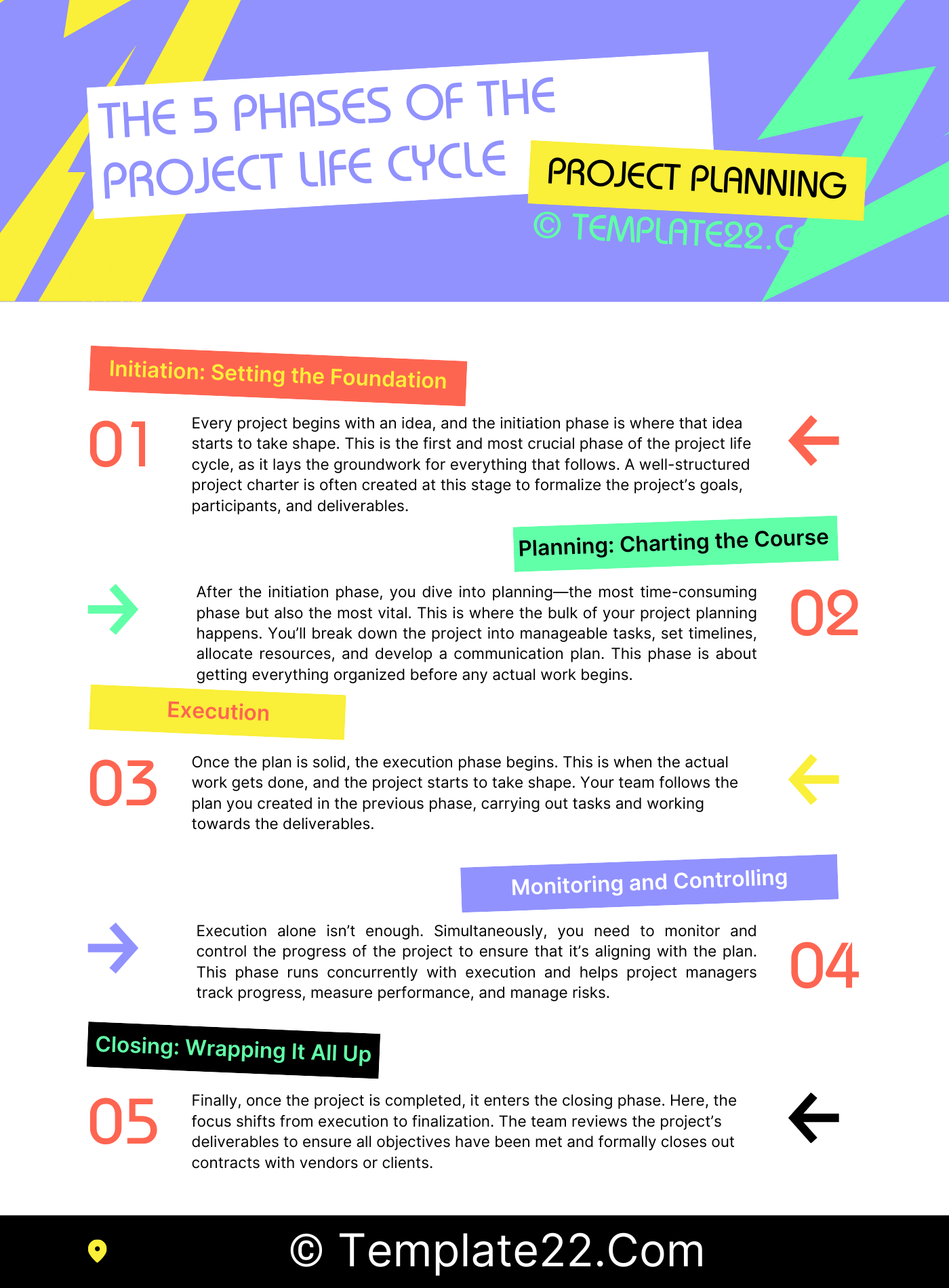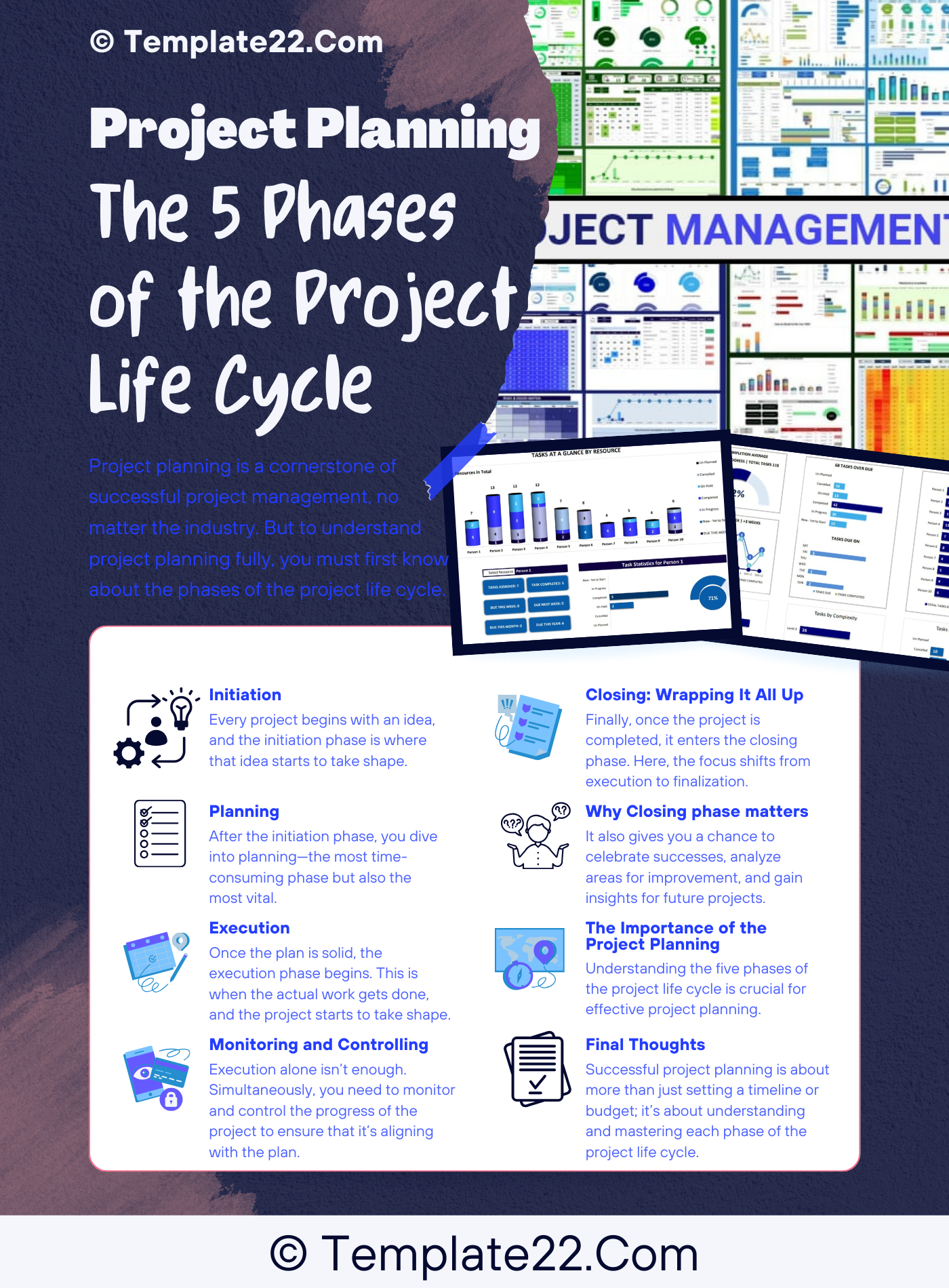 Project planning is a cornerstone of successful project management, no matter the industry. But to understand project planning fully, you must first know about the phases of the project life cycle. Each phase plays a critical role in ensuring your project gets off the ground, stays on track, and finishes successfully. In this blog, we’ll explore the five essential phases of the project life cycle and how they contribute to effective project planning.
Project planning is a cornerstone of successful project management, no matter the industry. But to understand project planning fully, you must first know about the phases of the project life cycle. Each phase plays a critical role in ensuring your project gets off the ground, stays on track, and finishes successfully. In this blog, we’ll explore the five essential phases of the project life cycle and how they contribute to effective project planning.
1. Initiation: Setting the Foundation
Every project begins with an idea, and the initiation phase is where that idea starts to take shape. This is the first and most crucial phase of the project life cycle, as it lays the groundwork for everything that follows.
In the initiation phase, key stakeholders define the project’s objectives, scope, and feasibility. You’ll conduct a feasibility study to determine whether the project is worth pursuing, identify risks, and gather input from key team members. A well-structured project charter is often created at this stage to formalize the project’s goals, participants, and deliverables.
Why this phase matters: If the initiation phase is poorly managed, the entire project could collapse. Without a clear goal and scope, it’s impossible to create a plan that ensures success.
2. Planning: Charting the Course
After the initiation phase, you dive into planning—the most time-consuming phase but also the most vital. This is where the bulk of your project planning happens. You’ll break down the project into manageable tasks, set timelines, allocate resources, and develop a communication plan. This phase is about getting everything organized before any actual work begins.
CLICK HERE TO DOWNLOAD 300+ PROJECT MANAGEMENT TEMPLATES & DOCUMENTS IN EXCEL
During the planning phase, it’s critical to define clear roles and responsibilities for each team member. This will prevent confusion later on. You’ll also create a project plan document that includes detailed timelines, milestones, budgets, and resource requirements.
Why this phase matters: Proper planning makes or breaks a project. If your timelines are unrealistic or your resource allocation is off, you’ll likely face delays and budget overruns. This is your chance to set yourself up for smooth execution.
3. Execution: Bringing the Plan to Life
Once the plan is solid, the execution phase begins. This is when the actual work gets done, and the project starts to take shape. Your team follows the plan you created in the previous phase, carrying out tasks and working towards the deliverables.
In this phase, project managers take on the role of facilitators, ensuring that the team stays on track, deadlines are met, and resources are managed effectively. Communication is key during execution—project managers must maintain frequent updates with stakeholders and handle any unforeseen issues that crop up.
Why this phase matters: The execution phase is where all your planning comes to fruition. Without a well-executed project, even the best-laid plans will fail.
4. Monitoring and Controlling: Staying on Track
Execution alone isn’t enough. Simultaneously, you need to monitor and control the progress of the project to ensure that it’s aligning with the plan. This phase runs concurrently with execution and helps project managers track progress, measure performance, and manage risks.
Key tools used in this phase include progress reports, performance indicators, and project management software. These allow you to compare the actual progress with your plan and make adjustments as needed. Monitoring also ensures that quality standards are maintained throughout the project.
Why this phase matters: Without proper monitoring and control, small issues can turn into major setbacks. Staying vigilant helps ensure the project remains on course.
5. Closing: Wrapping It All Up
Finally, once the project is completed, it enters the closing phase. Here, the focus shifts from execution to finalization. The team reviews the project’s deliverables to ensure all objectives have been met and formally closes out contracts with vendors or clients.
CLICK HERE TO DOWNLOAD 300+ PROJECT MANAGEMENT TEMPLATES & DOCUMENTS IN EXCEL
In this phase, you’ll also conduct a post-project review or retrospective to identify lessons learned. This allows you to document successes and failures, providing valuable insights for future projects. Additionally, the team might hand over the completed deliverables to the client and ensure everything is up to their satisfaction.
Why this phase matters: Closing the project formally ensures that nothing is left hanging. It also gives you a chance to celebrate successes, analyze areas for improvement, and gain insights for future projects.
The Importance of the Project Life Cycle in Planning
Understanding the five phases of the project life cycle is crucial for effective project planning. Each phase is interdependent, and skipping or rushing through one can lead to significant problems down the line. Initiation provides a strong foundation, planning ensures that foundation is solidified with actionable steps, execution brings it all to life, monitoring keeps it in check, and closing wraps everything up neatly.
When you approach a project with a clear understanding of these phases, your planning becomes more strategic, your team more organized, and your project more likely to succeed.
Final Thoughts
Successful project planning is about more than just setting a timeline or budget; it’s about understanding and mastering each phase of the project life cycle. By carefully navigating through initiation, planning, execution, monitoring, and closing, you ensure that your project not only reaches completion but does so efficiently and effectively. So, the next time you’re embarking on a new project, take a moment to reflect on the life cycle and how it can guide you to success.
With the right approach, you’ll see how the five phases of the project life cycle can turn a good plan into a great outcome.
